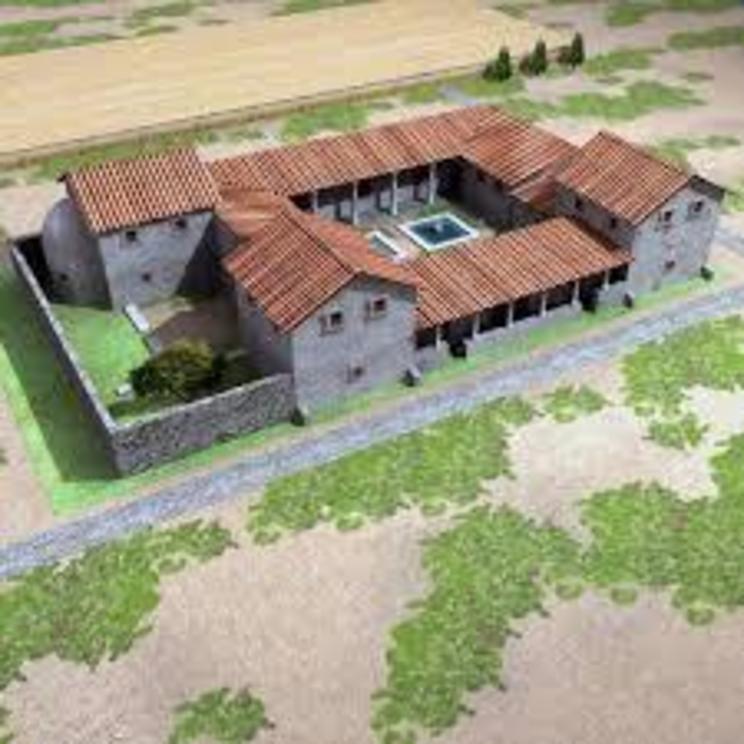Roman mega-villa bigger than the Taj Mahal is found in Oxfordshire
- The historic Roman structure is the second largest ever discovered in the UK
- The foundations measure 85m by 85m (278ft x 278ft) and date back to 99 AD
- It lies beneath a crop in a field near Broughton Castle near Banbury, Oxfordshire
- The land is owned by the third cousin of actor Ralph Fiennes
- Archaeologists discovered a sarcophagus inside the villa with the skeletal remains of an unknown woman
An enormous Roman villa has been uncovered beneath a field in Oxfordshire packed with trophies, including coins and boar tusks alongside a sarcophagus containing the skeletal remains of a unnamed woman.
Amateur detectorist and historian Keith Westcott found the ancient remains beneath a crop in a field near Broughton Castle near Banbury.
A team of archaeologists unearthed the remains of the historic building, which is bigger than the mausoleum at the Taj Mahal, as part of a four-month excavation project.
The foundations measure 85metre by 85metre (278ft x 278ft) – the second largest ever discovered in Britain – and date back to 99 AD.
The mausoleum at the Taj Mahal is 57metre x 57metre (187ft x 187ft).
The land previously belonged to Lord and Lady Saye and Sele, the parents of Martin Fiennes, who now owns the land.
He works as a principal at Oxford Sciences Innovation and is second cousin of British explorer Ranulph Fiennes and third cousin of actors Ralph and Joseph Fiennes.

A metal detectorist has uncovered one of the largest Roman villas ever discovered in Britain – and it was found on land belonging to the family of the actor Ralph Fiennes
The new structure is believed to be the second largest Roman villa ever found in Britain, behind only the Fishbourne Palace in West Sussex, which dates back to 75 AD was discovered in 1960.
Mr Westcott, 55, decided to investigate the site after being told by local farmer John Taylor that he had ploughed his tractor into a large stone in 1963.
Mr Taylor said he saw a hole had been made in the stone and when he reached inside he pulled out a human bone.
Incredibly, the farmer had uncovered a sarcophagus of a high-status woman who had died in the third or fourth century.
Fascinated by the story, Mr Westcott set off in October 2016 to explore the site properly.
His eureka moment came when he found a 1,800 year-old tile from a hypocaust system, which was an early form of central heating used in high-status Roman buildings.

A team of archaeologists unearthed the remains of the historic building, which is bigger than mausoleum at the Taj Mahal, following a four month excavation project. Pictured is Martin Fiennes on the north range wall
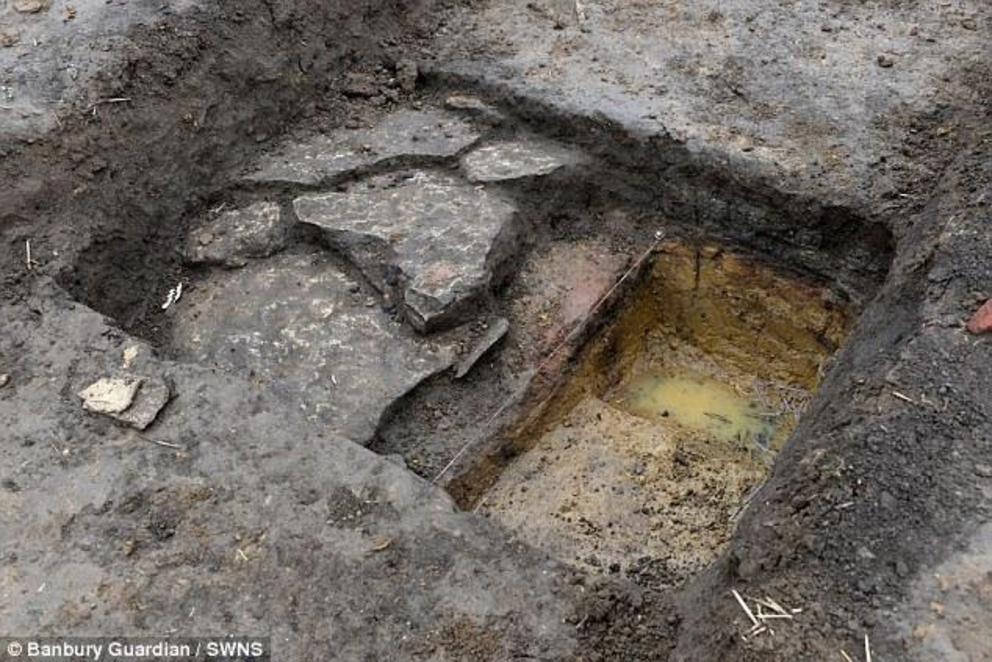
The 85m by 85m (278ft x 278ft) foundations date back to 99 AD and lie beneath a crop in a field near Broughton Castle near Banbury, Oxfordshire
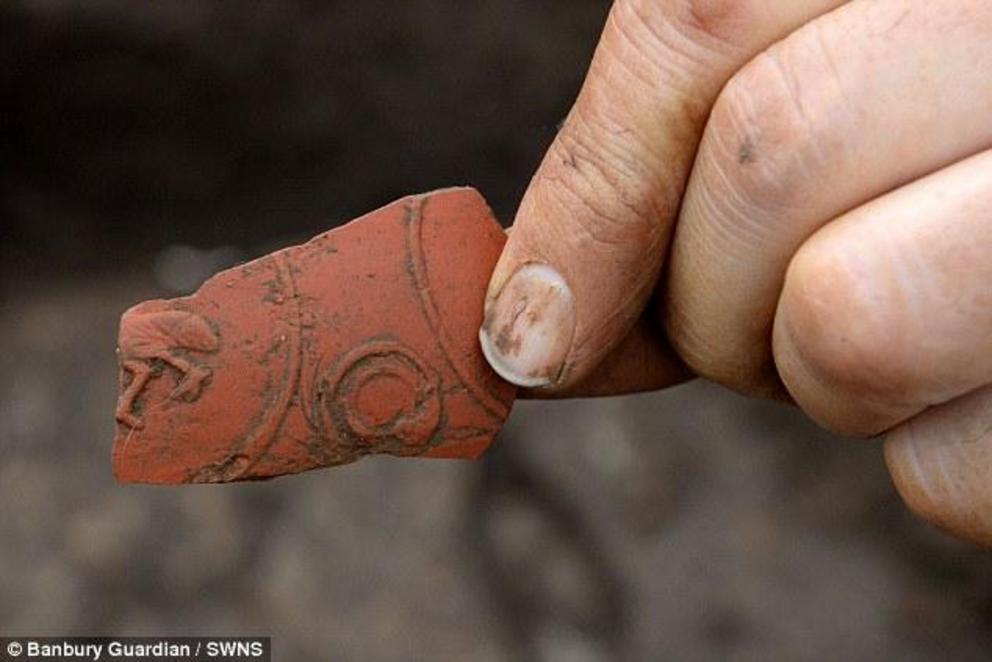
A wealth of artifacts including coins, coffins and a large boar tusk were also found during the dig which was led by detectorist and historian Keith Westcott. Pictured is an artifact discovered at the archaeological dig site
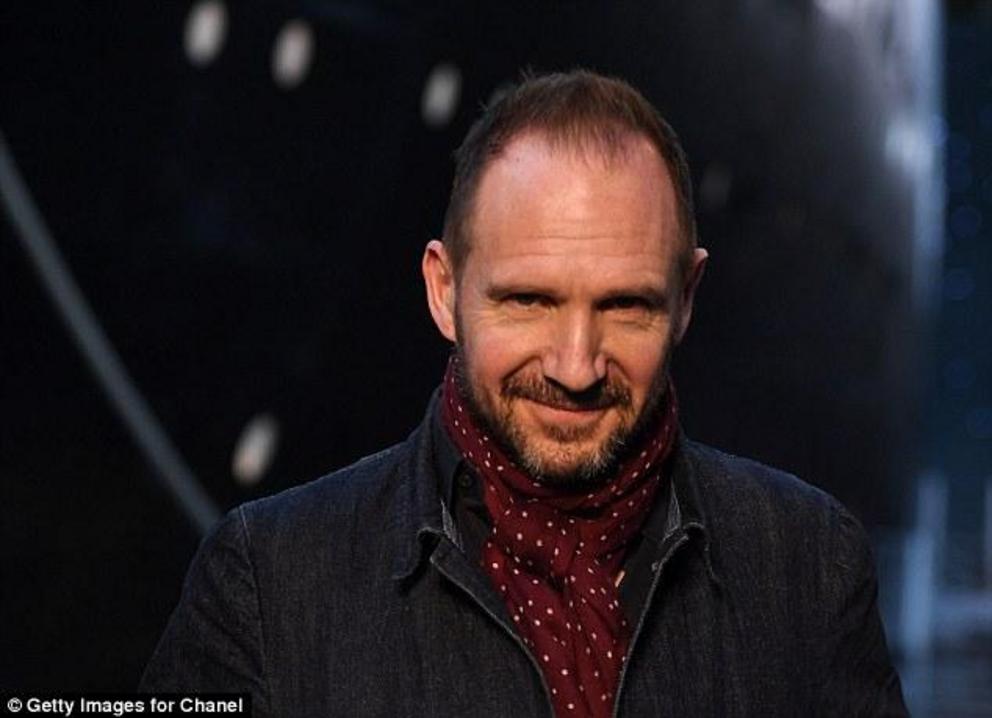
The land belongs to the family of actor Ralph Fiennes (pictured). The historic building is bigger than the mausoleum at the Taj Mahal
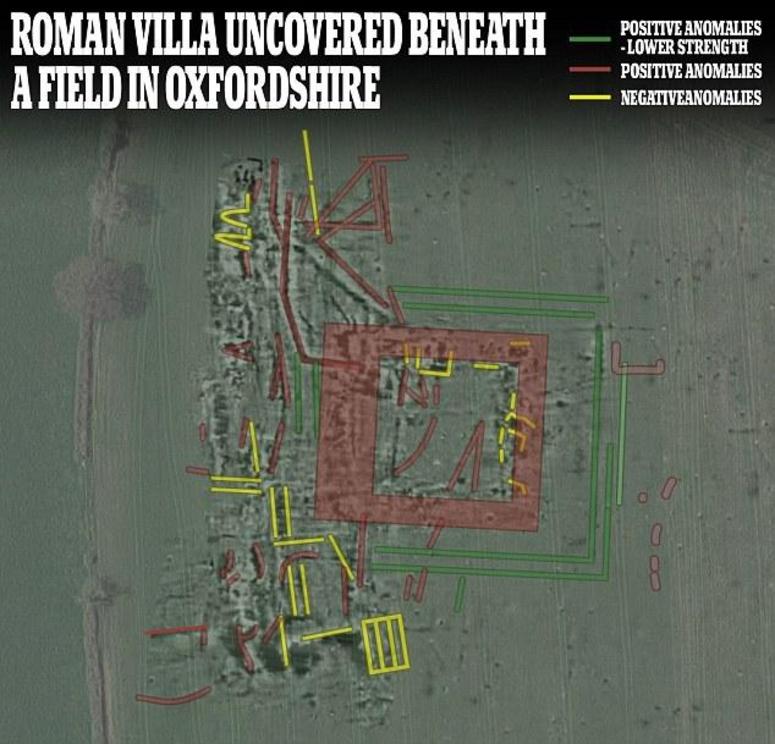
Very little is currently known about the site (pictured). Experts say the villa would have been the centre of rural industry and agriculture at the time
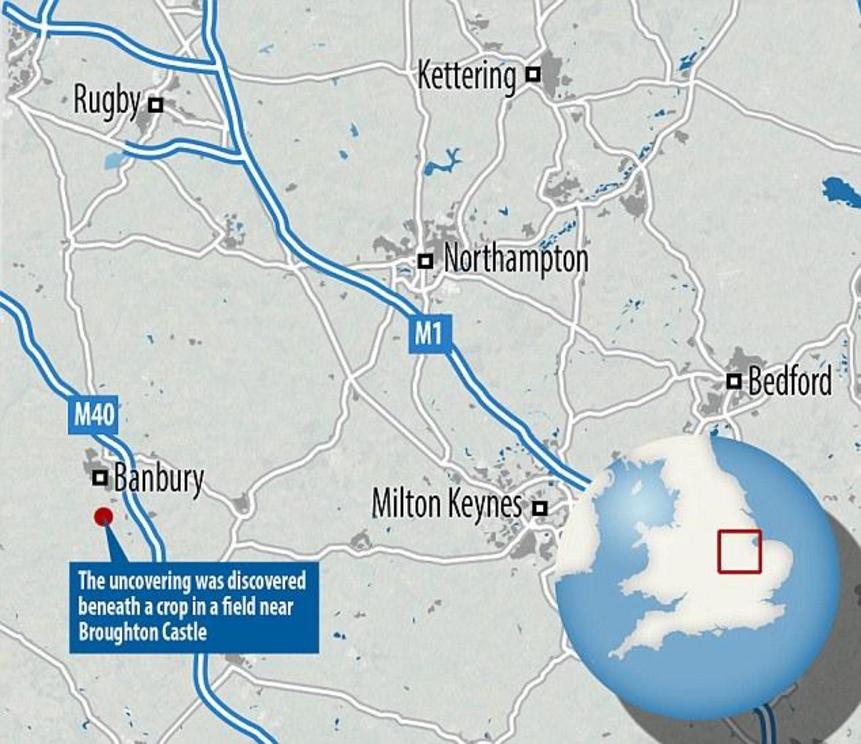
It is believed to be the second largest Roman villa ever found in Britain since Fishbourne Palace in West Sussex which dates back to 75 AD was discovered in 1960. Pictured is the site
WHEN DID THE ROMANS OCCUPY BRITAIN?
55BC - Julius Caesar crossed the channel with around 10,000 soldiers. They landed at a beach in Deal and were met by a force of Britons. Caesar was forced to withdraw.
54BC - Caesar crossed the channel with 27,000 infantry and cavalry. Again they landed at deal but were unopposed. They marched inland and after hard battles they defeated the Britons and key tribal leaders surrendered.
However, later that year, Caesar was forced to return to Gaul to deal with problems there and the Romans left.
54BC - 43BC - Although there were no Romans present in Britain during these years, their influence increased due to trade links.
43AD - A Roman force of 40,000 led by Aulus Plautius landed in Kent and took the south east. The emperor Claudius arrived in Colchester with reinforcements. Claudius appointed Plautius as Governor of Britain and returned to Rome.
47AD - Londinium (London) was founded and Britain was declared part of the Roman empire. Networks of roads were built across the country.
75 - 77AD - Romans defeated the last resistant tribes, making all Britain Roman. Many Britons started adopting Roman customs and law.
122AD - Emperor Hadrian ordered that a wall be built between England and Scotland to keep Scottish tribes out.
312AD - Emperor Constantine made Christianity legal throughout the Roman empire.
228AD - The Romans were being attacked by barbarian tribes and soldiers stationed in the country started to be recalled to Rome.
410AD - All Romans were recalled to Rome and Emperor Honorious told Britons they no longer had a connection to Rome.
Source: History on the net
It was then he knew that whatever ruins lay beneath the soil were of 'unimaginable quality and significance.'
Along with a team from Oxford Archaeology, Mr Westcott spent two weeks on the field in April this year, digging five trial trenches to gauge the scope of the remains.
Using technology such as magnotomerty – which acts like an x-ray through soil – walls, room outlines, ditches and other infrastructure was uncovered.
The villa's accommodation would have included a bath-house with a domed roof, mosaics, a grand dining room, kitchens and a living accommodation.
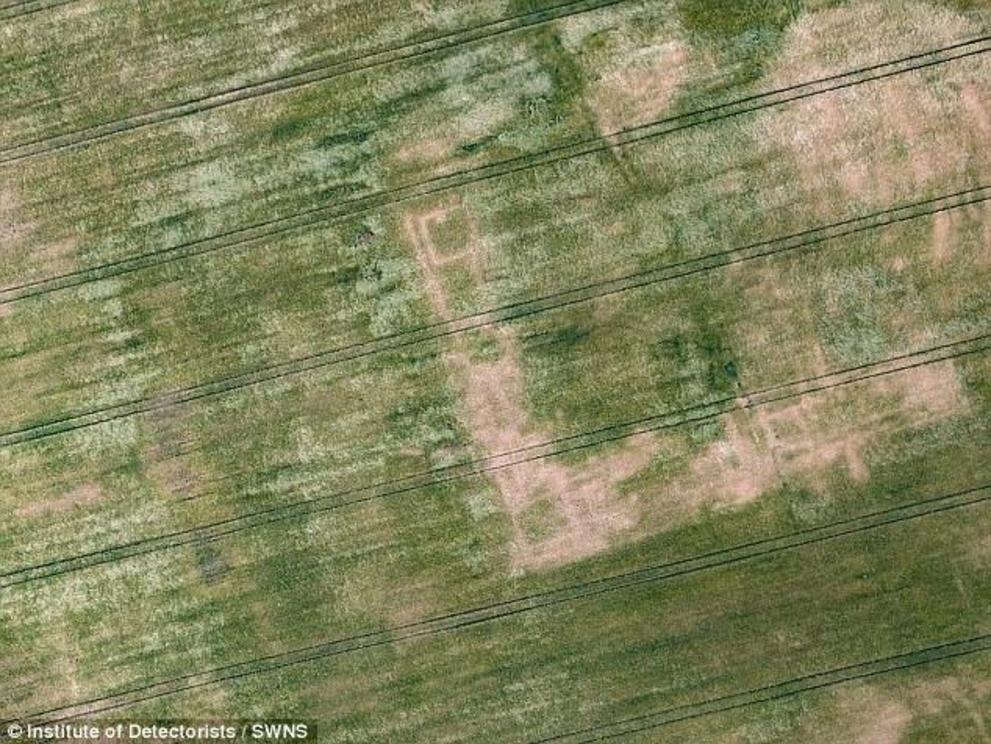
Along with a team from Oxford Archaeology, Mr Westcott spent two weeks on the field in April this year, digging five trial trenches to gauge the scope of the remains. Pictured is drone footage of the site
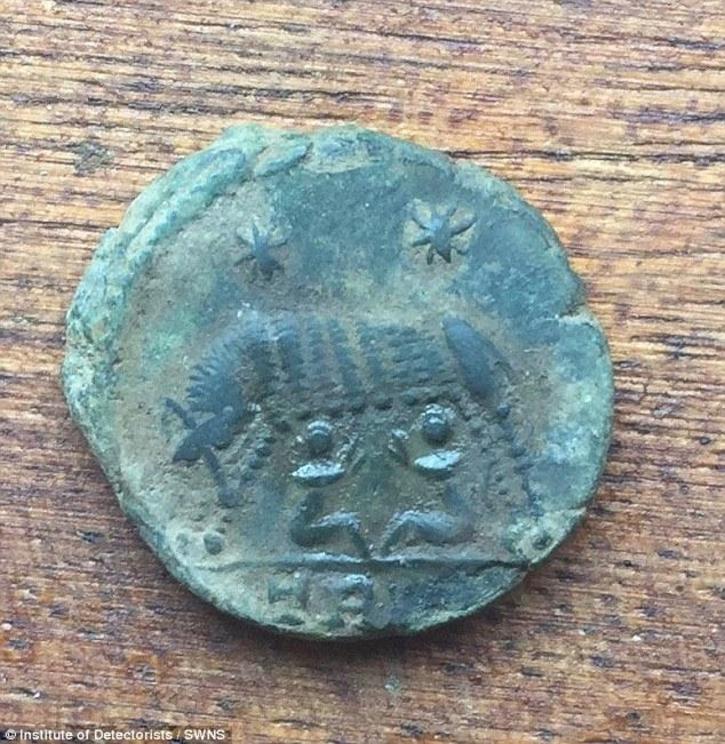
In 55BC Julius Caesar crossed the channel with around 10,000 soldiers. They landed at a beach in Deal and were met by a force of Britons. Pictured is a coin found at the site
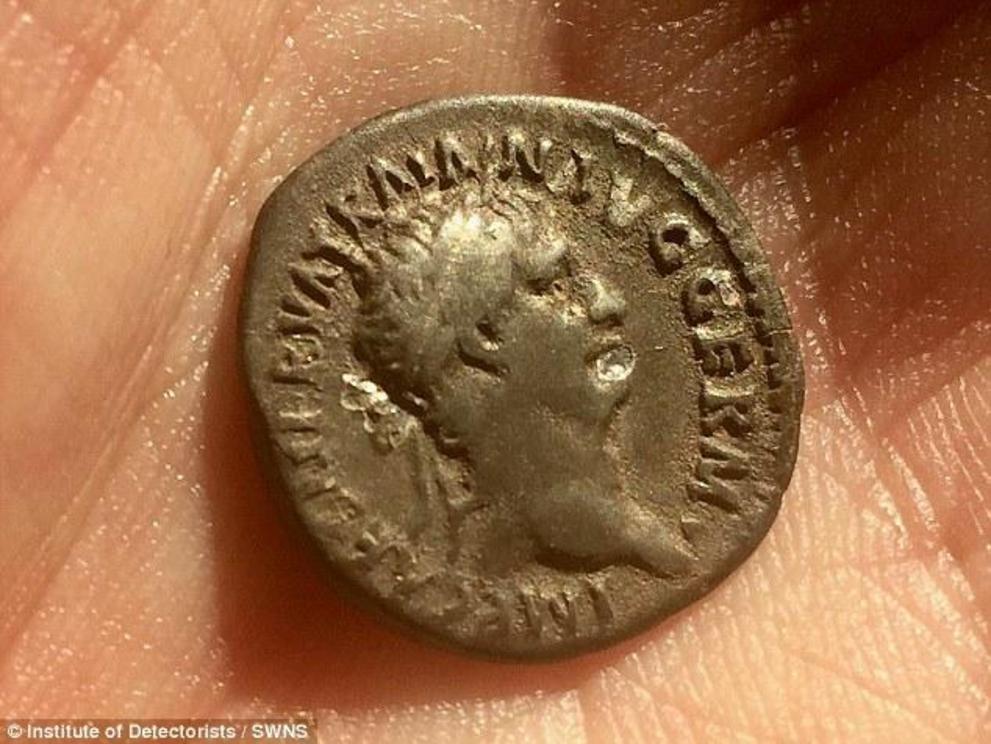
Pictured is a Roman coin found at the Broughton Castle villa dig site. A farmer first stumbled upon the site over half a century ago
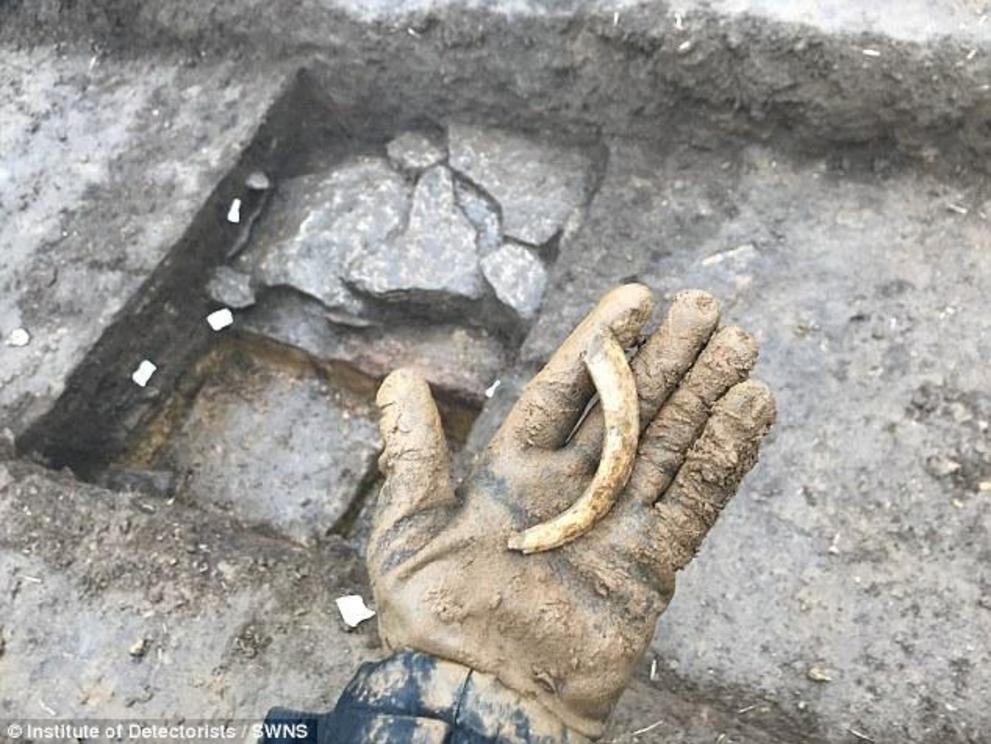
In 122AD Emperor Hadrian ordered that a wall be built between England and Scotland to keep Scottish tribes out. Pictured is a wild boar tusk found at the site

Pictured is an unidentified object from the site. The cost of the project could be in the region of around two million pounds
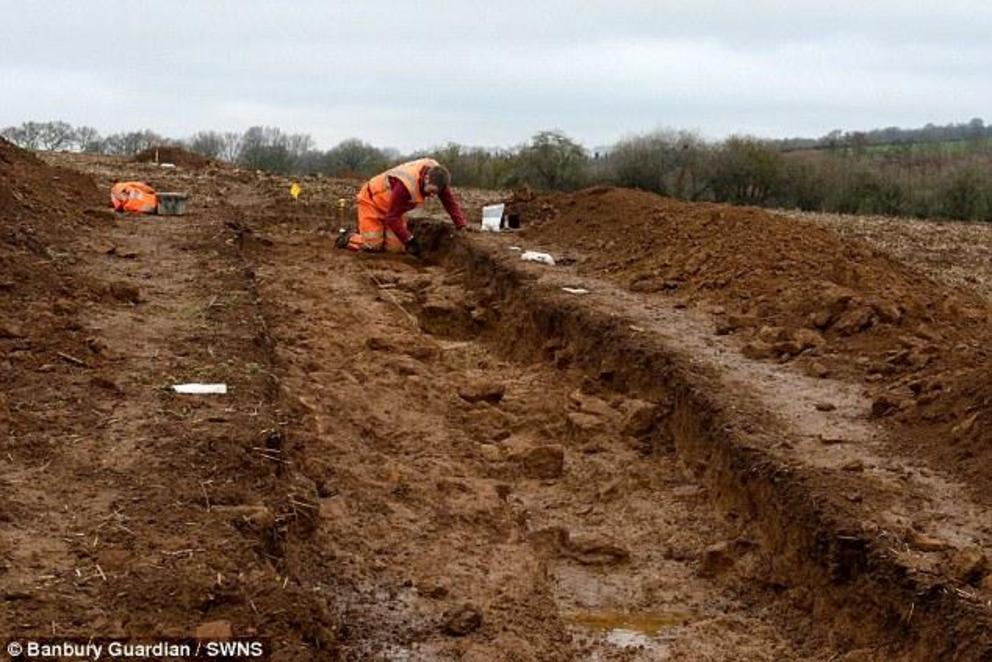
Mr Westcott, 55, decided to investigate the site after being told by local farmer John Taylor that he had ploughed his tractor into a large stone in 1963
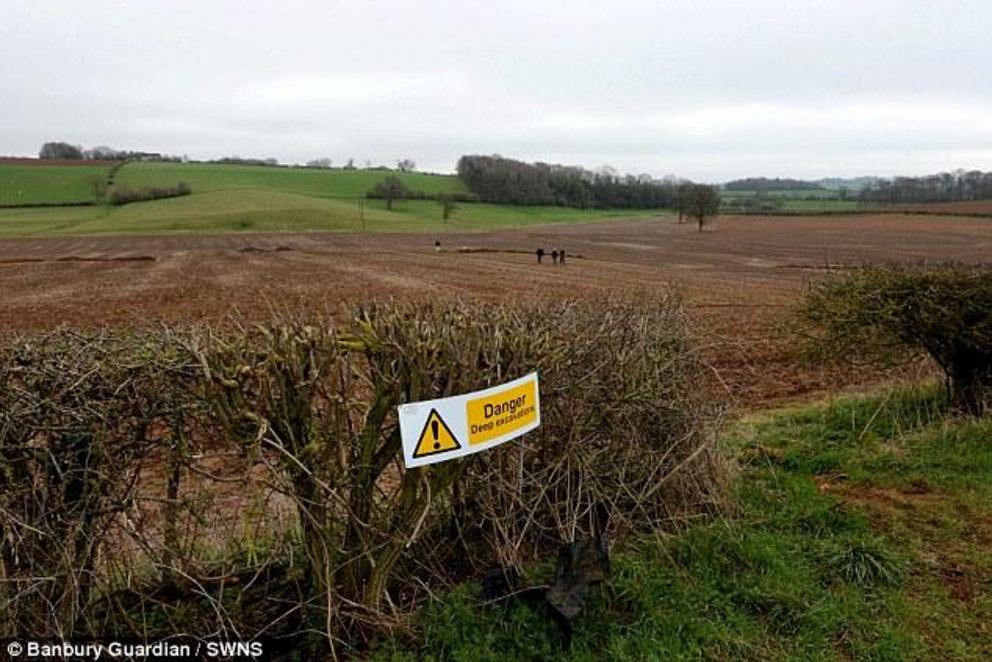
Mr Taylor said he saw a hole had been made in the stone and when he reached inside he pulled out a human bone
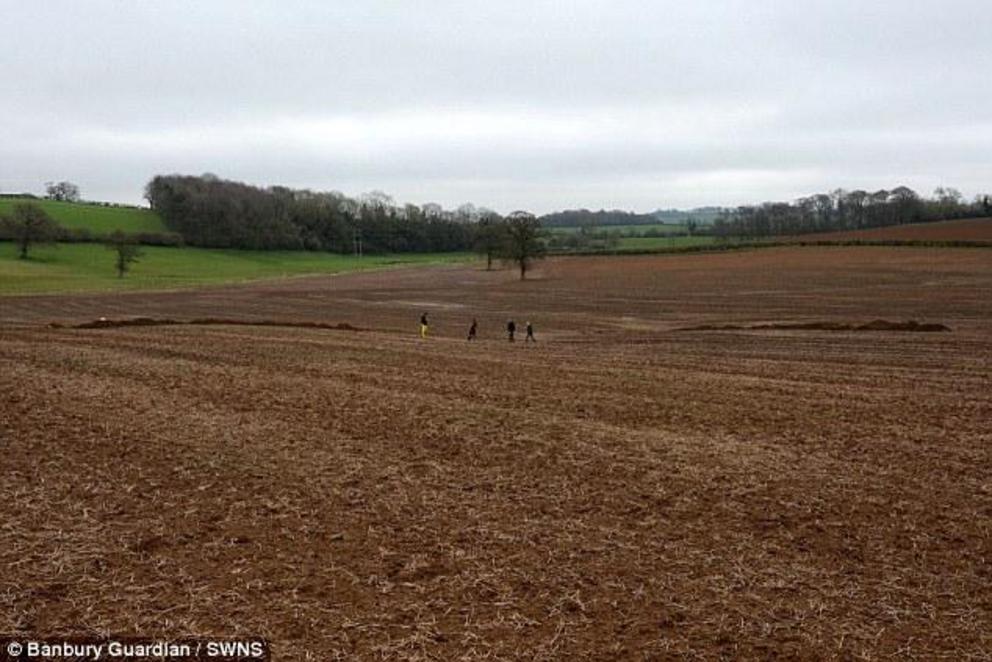
Incredibly, the farmer had uncovered a sarcophagus of a high-status woman who had died in the third or fourth century. Fascinated by the story, Mr Westcott set off in October 2016 to explore the site properly

Martin Fiennes is a principal at Oxford Sciences Innovation and is the third cousin of actor Ralph Fiennes and also second cousin to the explorer Sir Ranulph Fiennes (pictured)
In total 178 items of significance were uncovered, cleaned and cataloged including coins bearing the mythological twins Romulus and Remus as well as bone china.
Mr Westcott, who is director of The Association of Detectorists, said: 'It truly is a remarkable find of incredible historical significance.
'We've only uncovered about one per cent so the possibilities of what we still might find are endless.
'The only bigger one is at Fishbourne Palace in West Sussex – but that is a palace and we think that parts of it could date back to the second century.
'All other sites of this significance – with the exception of North Leigh near Witney – have a visitor centre and/or a museum, so it really is a big deal.'

'We've only uncovered about one per cent so the possibilities of what we still might find are endless', said Mr Westcott (pictured)
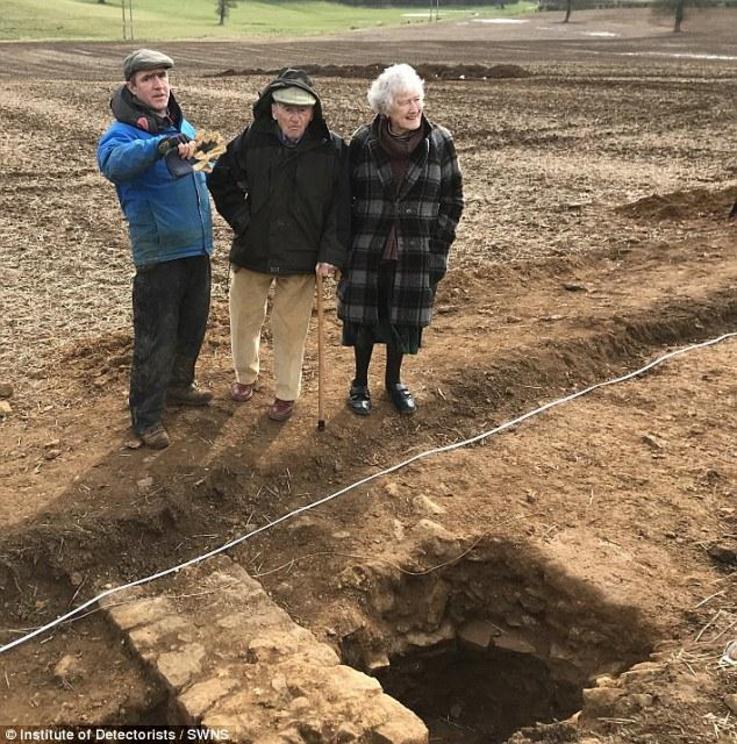
Martin Fiennes and his parents Lord and Lady Saye and Sele. Mr Westcott is director of The Association of Detectorists

It total 178 items of significance were uncovered, cleaned and cataloged including coins bearing the mythological twins Romulus and Remus as well as bone china. Pictured is Keith Westcott with a wild boar tusk
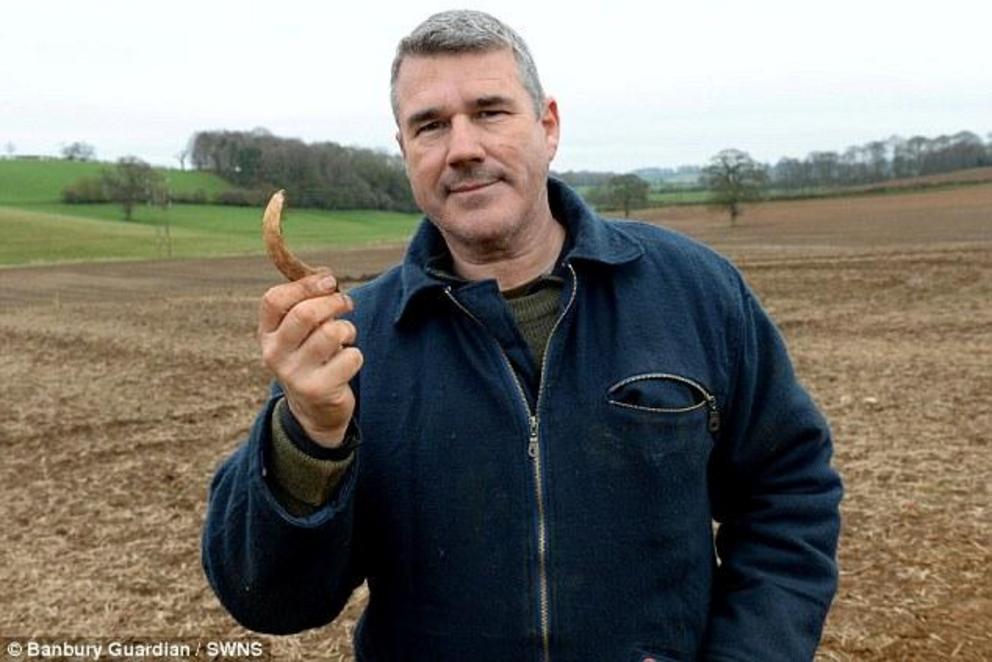
Mr Westcott (pictured), who is director of The Association of Detectorists, said: 'It truly is a remarkable find of incredible historical significance'
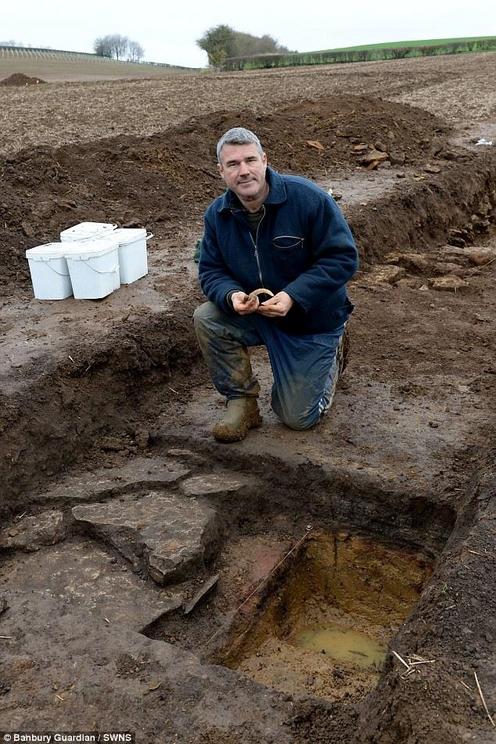
Mr Westcott says that it is possible Roman dignitaries visited for the sporting purposes
He says that it is possible Roman dignitaries visited for the sporting purposes.
'Most of the other big courtyard villas were discovered in the 1800s and excavated using Victorian techniques', said Mr Westcott.
'All of the other discoveries had been done so by accident but in this instance I had a theory and went with it.
'The villa would be the real centre of rural industry and agriculture and although the persons living there would have been very wealthy and powerful there would have been all sorts of things going on from the cooks to slaves.
'The more we're finding out about this part of north Oxfordshire, we're realizing at the head of the triangle between Fosse Way, Akeman Street and Watling Street was a very important Roman area', he said.
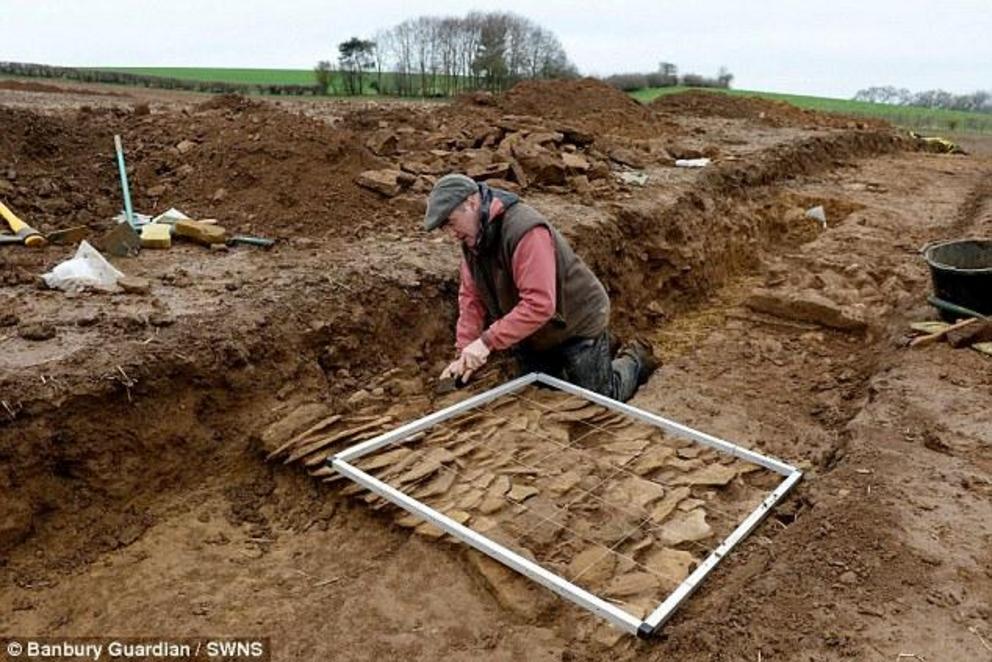
The land previously belonged to Lord and Lady Saye and Sele – the parents of Martin Fiennes – who now owns it (pictured)

Unlike many other sites, this one has nothing built on top. Universities, English Heritage, the Heritage Lottery Fund and Roman archaeology are now being approached to take part in a full excavation
Unlike many other sites, this one has nothing built on top.
Universities, English Heritage, the Heritage Lottery Fund and Roman archaeology are now being approached to take part in a full excavation.
The cost of the project could be in the region of around two million pounds.
Martin Fiennes, who was also central to the operation and took part in the dig, said: 'The next step will be for me to reach out to various universities, starting with Oxford, to see if they are interested in leading a project to do a full excavation over a period of years.
'Obviously we would like someone to do it who can involve the local community as much as possible as well as comprehensively recording the site.
'If no-one wants to do it, then it stays happily undisturbed for another 50 or 100 years until someone comes up with the money and interest.'

The cost of the project could be in the region of around two million pounds. Pictured are artifacts discovered at the dig
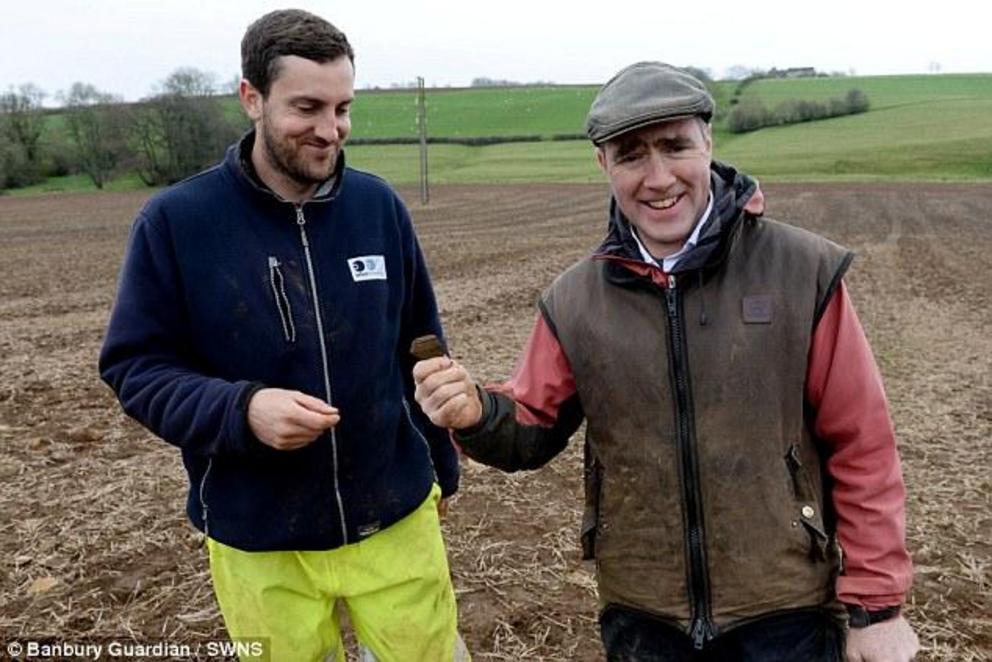
Martin Fiennes (right), who was also central to the operation and took part in the dig, said: 'The next step will be for me to reach out to various universities, starting with Oxford, to see if they are interested in leading a project to do a full excavation over a period of years'

'If no-one wants to do it, then it stays happily undisturbed for another 50 or 100 years until someone comes up with the money and interest', said Mr Fiennes (right)

